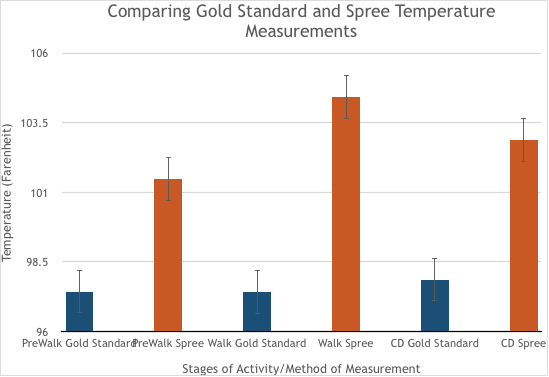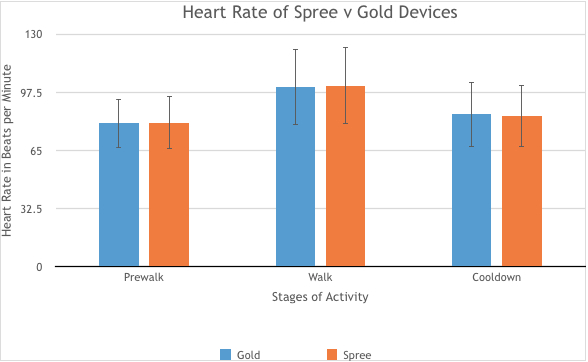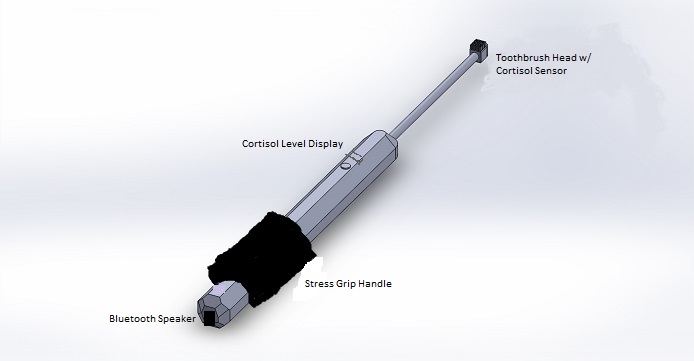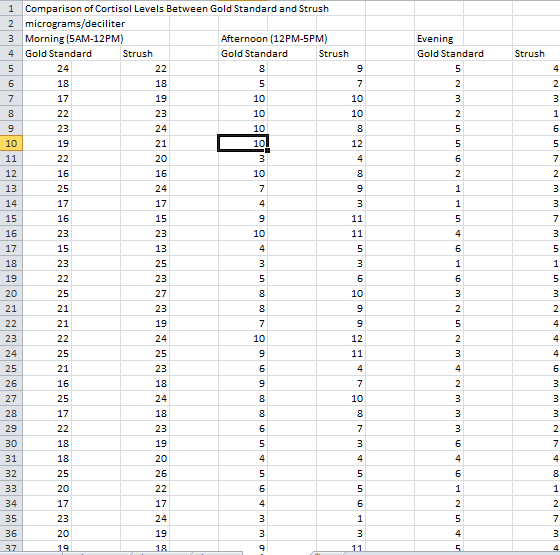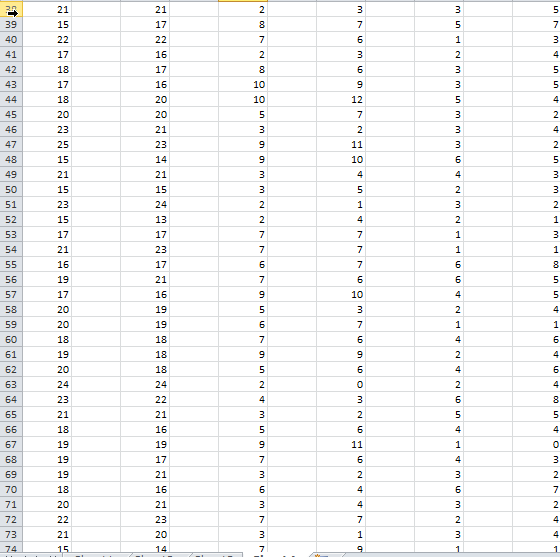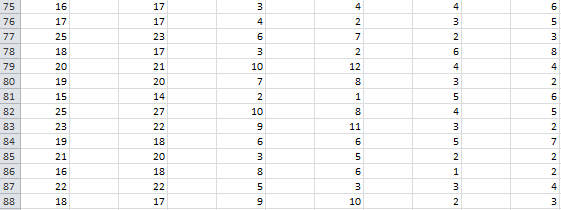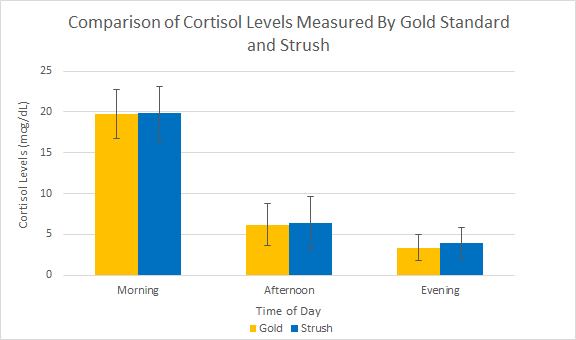BME100 f2014:Group31 L3
| Home People Lab Write-Up 1 | Lab Write-Up 2 | Lab Write-Up 3 Lab Write-Up 4 | Lab Write-Up 5 | Lab Write-Up 6 Course Logistics For Instructors Photos Wiki Editing Help | |||||||
|
OUR TEAM
LAB 3A WRITE-UPDescriptive StatisticsTemperature Readings PreWalk Gold Standard Mean: 97.43860606, Std. Dev (Farenheit)0.782922836, Count:164, Std. Error 0.061136002 Walk Gold Standard Mean: 97.41843434, Std. Dev (Farenheit)0.882974589, Count:395, Std. Error 0.044427273 CD Gold Standard Mean: 97.87127273, Std. Dev (Farenheit)0.801682045, Count:164, Std. Error 0.06260085 PreWalk Spree Mean: 101.4727273, Std. Dev (Farenheit)2.621588693, Count:164, Std. Error 0.204711684 Walk Spree Mean: 104.4292929, Std. Dev (Farenheit)3.027728481, Count:395, Std. Error 0.152341553 CD Spree Mean: 102.8909091, Std. Dev (Farenheit)1.993948717, Count:164, Std. Error 0.155701236
Prewalk Gold Mean: 79.78195489, Std. Dev (bpm): 13.34242399, Count: 133, Std. Error: 1.156934886 Prewalk Spree Mean: 80.70676692, Std. Dev (bpm): 14.95943097, Count: 133, Std. Error: 1.297147174 Walk Gold Mean: 100.6028571, Std. Dev (bpm): 21.38310644, Count: 350, Std. Error: 1.142975117 Walk Spree Mean: 101.1628571, Std. Dev (bpm): 21.57506501, Count: 350, Std. Error: 1.153235734 Cooldown Gold Mean: 85.10204082, Std. Dev (bpm): 18.02461585, Count: 147, Std. Error: 1.486645259 Cooldown Spree Mean: 84.14965986, Std. Dev (bpm): 17.2873989, Count: 147, Std. Error: 1.42584063
Graph
Dataset and StatisticsBecause the experiment compared only two data sets (the gold standard and the Spree device), a t-test was used. The t-test itself was uncoupled because the data sets were not directly sequential to each other. In other words, there were no (before-and-after measurements). Pulse Overall T Test: 0.909374538 Pulse Overall Pearson's Correlation: 0.805209108 Temperature Overall T Test: 0.0 Temperature Overall Pearson's Correlation: 0.028772406 Since the Temperature T-Test produced a result that was less than 0.05, we conclude that there is a statistically significant difference between the Gold Standard and Spree measurements. That isn't good for the Spree because if it were a good and accurate device, then it would yield results similar to the Gold Standard and thus there would be no significant difference between the two devices. Since the Pulse T-Test produced a result that was greater than 0.05, we conclude that there is no statistically significant difference between the Gold Standard and Spree measurements. That is good for the Spree, because it means it is almost on par with the Gold Standard in terms of accuracy. Because the Temperature Pearson's correlation test produced a value that was close to 0, we conclude that there is no correlation between the two sets of measurements. Because the pulse Pearson's correlation test produced a value that was close to 1, we conclude that there is positive correlation between the two sets of measurements.
Summary/DiscussionIn the comparison between the gold standard and the Spree health monitor, there were significant differences found between the temperature measurements. These differences can be attributed to the general scale used to measure temperature, ranging only from 1 to 4. With such little accuracy, discrepancies are guaranteed. This inaccuracy is exacerbated by the fact that body temperature is inaccurately measured on the surface. External temperature is often swayed by outside sources of heat, while internal temperature can be more accurately measured through oral or rectal exams, such as the mouth thermometer used as the gold standard in this experiment. The Spree exam, in order to improve accuracy in measuring temperature, should adopt a more detailed scale than the current 1-4 scale. Also, to improve accuracy, making the device more compact and able to fit within the mouth would allow for more accurate readings. However, this would inconvenience the user, so another method may be necessary. However, the current level of uncertainty is unacceptable in a final product. As for errors in heart rate measurements, there was no significant difference between the pulse ox and the Spree device. However, measurements were sporadic, with the device often unavailable when the timer sounded. As a result, there is enormous room for inaccuracies due to uneven measuring intervals, which could result in understating high heart rate measurements or overstating low heart rate measurements. This would also undermine consumer utility; if the device itself is unable to establish a connection when it is needed, much of its usefulness is diminished. In order to address this, the technology itself must be improved. The application should be able to maintain a consistent connection with any nearby device and display constant measurements. In this way, while measurements may be accurate to a certain degree compared to the gold standard, they will also be consistent and readily available. Finally, the physical design of the device itself was clunky and inconvenient. The test subject often readjusted the device, feeling uncomfortable due to the lack of a size-adjusting strap. Also, matted hair would block the device itself, causing discrepancy in the data. Positioning of the band would influence the readings and the reception to the application. All of these are disadvantages of using a headband as the final product. In order to create a more practical design, placement in a less conspicuous location may be in order, such as the wrist or around the waist. Altogether, the Spree monitoring device possesses many design errors and provides inaccurate measurements. A reform of the design is necessary, and will be the only way that a convenient, pragmatic, and effective device can be manufactured.
LAB 3B WRITE-UPTarget Population and NeedThe target population of the Strush toothbrush is anyone with health conditions that can be exacerbated by stress. Those with cardiovascular issues or high blood pressure would benefit from the use of this product. In addition, asthmatics whose asthma can be triggered by stress would benefit from knowing how high their stress levels are. In general, anyone with health conditions that can be affected by stress levels would benefit from being able to accurately measure their stress levels because there is no easy method for the average patient to do so in their own home. This type of device is needed in order to help monitor those with potentially fatal health problems related to stress. Many patients are constantly at risk of reoccurring health problems that result from stress. Although brushing teeth only occurs several times during the day, the device can be used at any time, because saliva is the only needed substance to measure cortisol levels. By simply placing the head of the toothbrush on the tongue, cortisol levels can be determined. Research articles that helped determine possibility of salivary cortisol measurement. http://labtestsonline.org/understanding/analytes/cortisol/tab/test/ http://www.medicaldaily.com/your-saliva-says-lot-about-your-health-heres-what-look-295506 http://www.dramybrenner.com/bhrt_cortisol.htm
Device DesignThe device is an electric toothbrush that has been modified to include a sensor that detects cortisol levels in saliva. These levels would be displayed on an LED monitor located on the front face of the toothbrush handle. Furthermore, we are including a rubber stress grip to help relieve the stress of individuals who have consistently high cortisol levels. Also, at the bottom of the toothbrush is a bluetooth speaker, which can play calming music by simply synching to the phone of the user. In doing so, the device can not only monitor, but also mitigate stress symptoms.
Dataset and StatisticsGold Standard Morning: Mean - 19.78571429, Standard Deviation - 2.9902307950, Standard Error - .32822047 Strush Morning: Mean - 19.82142857, Standard Deviation - 3.311756038, Standard Error - 0.363512451 Gold Standard Afternoon: Mean - 6.202380952, Standard Deviation - 2.619573045, Standard Error - 0.287535497 Strush Afternoon: Mean - 6.416666667, Standard Deviation - 3.189622984, Standard Error - 0.350106606 Gold Standard Night: Mean - 3.369047619, Standard Deviation - 1.588966186, Standard Error - 0.174411698 Strush Night: Mean - 3.904761905, Standard Deviation - 1.942666455, Standard Error - 0.213235346 T-Tests Morning T-Test: 0.9416086 Afternoon T-Test: 0.634821844 Night T-Test: 0.052102711 Overall T-Test: 0.698218419
Pearson's R Correlation: 0.984092502
GraphMorning T-Test was 0.9416086, which is greater than .05, so there is no statistically significant difference between the gold standard and Strush. Afternoon T-Test was 0.634821844, which is greater than .05, so there is no statistically significant difference between the gold standard and Strush. Evening T-Test was 0.052102711, which is greater than .05, so there is no statistically significant difference between the gold standard and Strush.
|
|||||||

